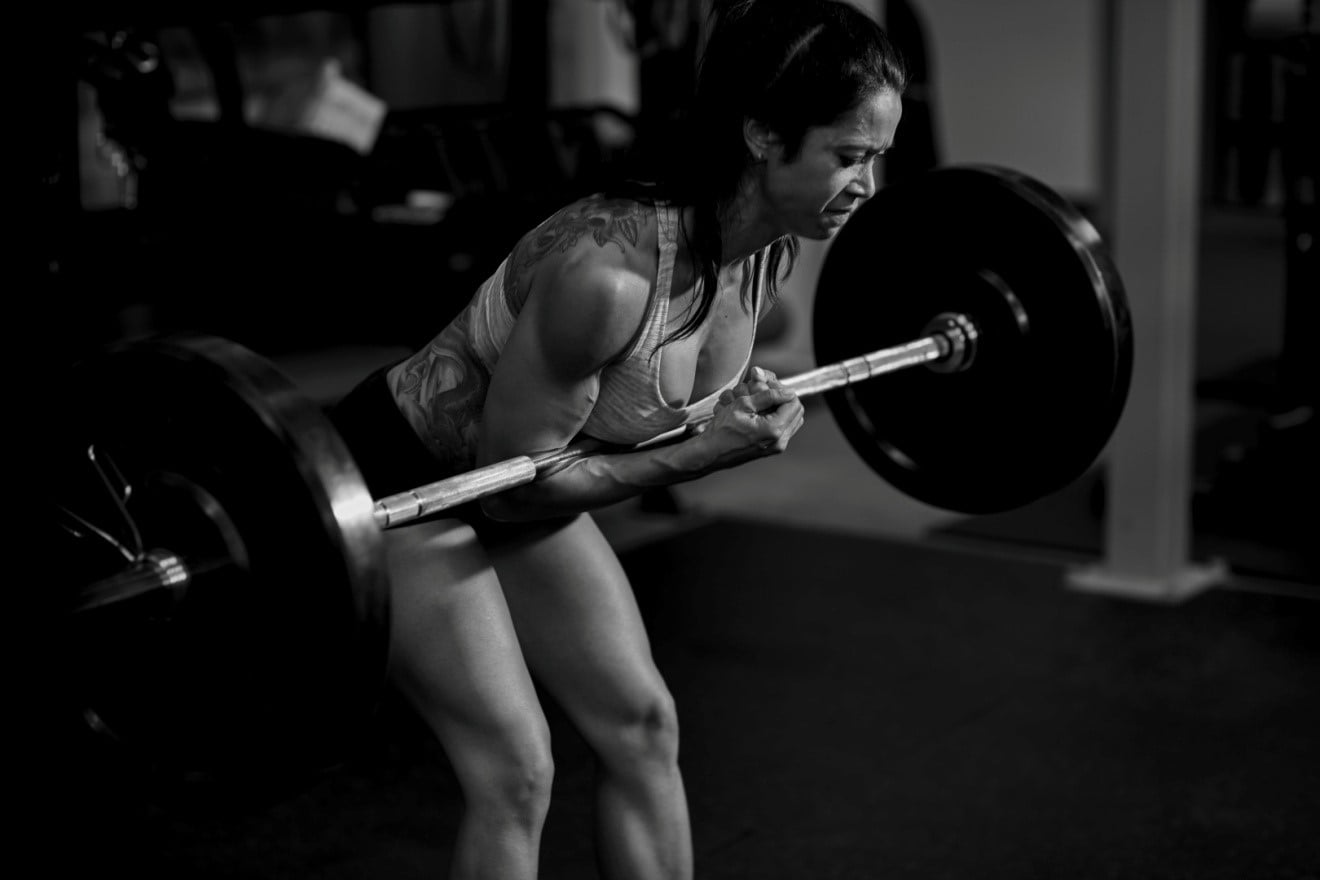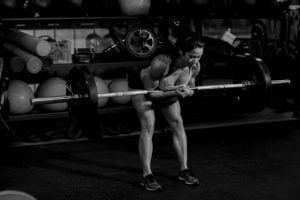Knowledge
I Zercher Everything!
Articles, Muscle gain, Strength and performance

I Zercher Everything!
I’m at a point in my life and training life where I’m looking for the exercises that give me the biggest bang for my buck. As I get older, I find that my capacity to handle volume and recover from training is not as high as it once was. And from a professional standpoint, I don’t have as much time to devote as I did a few years back. So, it’s now become super important to accomplish more with less work. I find I can do this with Zercher variations.
Zerchers have been part of my training arsenal for as long as I can remember. I started doing them when I was still competing in Olympic lifting after reading an article on them written by the late John V. Askem. Although J.V. sadly passed away a few years back, you can still find his work on the internet. His article on Zerchers can be found here in the article TIME FOR A FEW ZEE’zzz by ontariostrongman.
Recently, I have ramped up my use of Zerchers using several variations. The main reason is to increase volume for my traps, upper back and biceps (areas I want to emphasize) without increasing my overall lifting volume. I also find that my lower back is vulnerable when I start to lift heavy, so doing more Zercher movements is a way to prevent that from happening (by strengthening my core) as I transition back to heavy lifting.
In this article, I will detail five of my favorite Zercher drills.
Zercher Squat
I’ve been doing Zercher squats since 1997. I credit a large part of my front squatting gains to this exercise. It is also the best core strengthening lift that I know. When I set up and unrack the bar, I can literally feel my obliques, rectus abdominis and transversus abdominis cinching my spine! In fact, I once got a severe cramp in both obliques during a max effort Zercher squat.
It is also a big money lift because it does stimulate growth and strength gains in the upper back, mostly the traps (and as Paul Carter would say “Traps are the new abs”), as well as in the biceps.
I find the Zercher to also be very effective for people with longer legs as far as stimulating the quads. Long limbed individuals often have a hard time hitting the quads with the back squat because their levers favor the glutes and lower back. By shifting the load forward and because you can’t lean too far forward or risk dropping the bar, the Zercher squat will allow them to get more quadriceps growth than the regular squat. The front squat would do this as well, but most people can Zercher more than they can front squat allowing them to put a greater overload on their quads.
I also call the Zercher squat “the squat for those who love to train the upper body but hate training legs”: the Zercher will make your upper body swell up during the session and you will get a better upper body feeling than when doing a purely lower body exercise. In fact, when I do a session of Zercher squats and deadlifts, my back, traps and even arms look jacked!
Zercher Good Morning



The Zercher Goodmorning is the ultimate “backside builder”. Just like any Goodmorning or Romanian deadlift variation, it is very effective at targeting the glutes, hamstrings and lower back, but it is far superior for stimulating the traps and the rest of the upper back. And just like all the Zercher movements, it does hit the arms somewhat too.
You can use slight modifications to focus more on some muscles than others:
- Cross your arms to hold the weight (like Mai is doing in the pics). This will allow you to have a more solid hold on to the bar and you will be able to use more weight, which will overload the big prime movers more: glutes, lower back, hamstrings. However, this grips slightly decreases the involvement of the arms, and the traps also seem to receive a bit less stimulation.
- Use a non-crossed grip (like I’m using the the squat video). To increase the demand on the arms and traps. If you focus on keeping the bar close to you at all times, it will also increase lats activity. However, it might limit how much weight you can use or how far down you can bend down without losing control of the bar. This might decrease the load on the hamstrings, glutes and lower back.
- Elevate the front of your feet. By putting a ½” elevation under the front half of your feet, you will be able to better recruit the hamstrings by increasing their stretch and facilitating moving the hips far back. A mechanical rule I like to use is that the muscle being stretched the most is the muscle being recruited the most. So, elevating the front of the feet will allow you to target the hamstrings more. On the other hand, by pre-stretching the hamstrings with the elevation you might reduce the range of motion you can reach (how far your bend down), so the glutes and lower back might receive less stimulation.
I prefer to do these with higher reps and leave the heavier “bending” work to Romanian deadlifts.
Zercher Shrugs
I’m all about developing what I call “The Power Look”. A physique that is lean and muscular but also looks thick and strong, not just aesthetic. Big traps as well as a thick upper back is one of the main keys to getting that physique.
I include a lot of direct traps work in my own program and that of my clients: high pulls, DB shrugs, barbell shrugs, Kirk shrugs, power shrugs. But Zercher shrugs have a special place in my programs in recent months. First of all, because they give a totally different feeling in the traps, but also because the nature of the movement (the upper back musculature (rear delts, rhomboids, mid traps) are involved more than with regular shrugs) make it very effective at building an overall thick look. There is also the added benefit of the biceps stimulation they provide.
I see some strongman competitors using insane amounts of weight on that exercise by leaning back. They are of course super strong, but that variation is not a great way to directly target the traps and upper back. The position actually reduces the amount of work the upper back must do to support the load.
I prefer to lean slightly forward. This actually increases upper back work while also making it easier to have a longer range of motion on the shrug. You are also shrugging directly against the resistance, which you aren’t doing when leaning back.
I’m all for moving big weights, but since my goal is building muscle, I want to have the right muscles move them, not a technique hack that allows me to move more weight from point A to point B.
Zercher front raise
I actually came up with this movement almost by accident. I tried to see how much Zercher exercise variations I could come up with. This one sounded a little far-fetched but much to my surprise it ended up being quite effective!
If done slowly and with a hold at the top of the movement, it really isolates the front deltoid nicely, and if done in a more explosive matter (like in the video) I find it to be a great assistance exercise to strengthen the start of the military press (the action at the shoulder joint, shoulder flexion, is what should happen at the start of a press).
I really like to use a contrast superset where I use the Zercher front raise first, with heavy weights, low reps and moving explosively, and then barbell front raises (I like to use an EZ bar) for slower movement and higher reps.
As an added bonus, this movement also involves the traps as well as upper chest to some degree.
Zercher Carry
This is my favorite form of loaded carry. Nothing hits the core like this exercise, and just like any Zercher variation, it also heavily hits the biceps, traps and upper back!
Here’s a little tip for big guns aficionados: the bigger/thicker the implement you are carrying, the more you hit the biceps. With a regular bar (28-29mm in diameter) the bar can rest fully in the elbow crease and you can really close your arms around it. With a log like I’m carrying in the video, the elbow angle is wider and there is more pressure on the forearm. This means that the arm flexors must work harder to avoid the elbow joint from opening up. Carrying a thicker implement also increases the demand on the core since the load is shifted a bit more forward.
When doing this exercise to build muscle and improve your core it is important to avoid leaning back too much. The more your torso stays perpendicular to the floor, the harder you must work to maintain the load and posture. If you are a strongman and going fast/moving heavy things is the goal then yes, leaning back is fine. But most of us will use that exercise to build stronger muscles and improve our big lifts, so try to avoid any important backward lean.
Conclusion
There you have it! I could almost be called “The Zercher guy” because I include some sort of Zercher exercise in most of my training days. I find it to be a great way to get more upper back, traps and biceps development without adding more direct volume for these areas.
Plus it makes you look badass in the gym, which is never a bad thing!
-CT